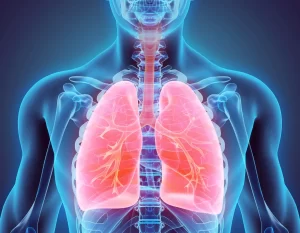
Menopause is a natural transition in a woman’s life, but it comes with challenges, especially when it comes to staying active. Fluctuating hormones, fatigue, joint pain, and changes in metabolism can make exercise feel more difficult than before.
However, staying active during menopause is one of the best ways to manage symptoms, maintain a healthy weight, and improve overall well-being. With the right approach, movement can become an energizing and enjoyable part of daily life.
Staying active during menopause is not just about maintaining fitness—it’s about improving overall health and quality of life. As hormone levels shift, women experience changes in metabolism, muscle mass, and energy levels, making it even more crucial to prioritize movement.
With declining estrogen levels, metabolism slows down, increasing the risk of weight gain. Regular physical activity helps maintain a healthy weight and reduces abdominal fat.
Menopause increases the risk of osteoporosis and joint stiffness. Strength training and weight-bearing exercises improve bone density and reduce the risk of fractures.
Exercise releases endorphins, which help combat mood swings, anxiety, and depression commonly associated with menopause.
Studies suggest that regular physical activity can lessen the frequency and severity of hot flashes while improving sleep quality.
Estrogen helps protect the heart, and its decline increases the risk of cardiovascular disease. Aerobic exercise supports heart health and lowers blood pressure.
By making movement a priority, you can ease menopause symptoms and set the foundation for a healthier future.
Not all exercises are created equal when it comes to staying active during menopause. The best workouts focus on maintaining muscle, supporting heart health, and reducing stress on joints. Here are the most effective types of exercise for menopausal women:
Incorporating a mix of these exercises ensures a well-rounded fitness routine that keeps you strong, mobile, and energized throughout menopause.
Many women face challenges when trying to stay active during menopause, including fatigue, joint pain, and a busy schedule. However, with the right strategies, it’s possible to stay consistent and make exercise a regular part of daily life.
Hormonal changes can lead to low energy, making it harder to stay motivated. Opt for low-impact workouts like walking, yoga, or swimming on low-energy days. Listen to your body—shorter workouts (even 10–15 minutes) are better than none.
Menopause can lead to increased stiffness and discomfort in the joints. Focus on gentle exercises like water aerobics, cycling, or Pilates to reduce strain. Strength training helps support the joints by improving muscle stability.
Short, high-impact routines like bodyweight circuits or HIIT can be effective in just 20 minutes. Incorporate movement into daily life—take the stairs, stretch during TV time, or go for a walk after meals. Prioritize consistency over intensity; small steps lead to long-term success.
Staying active during menopause requires consistency, but it doesn’t have to be overwhelming. By making small, intentional changes, you can build an exercise routine that fits your lifestyle and keeps you motivated.
Choose activities you enjoy to make exercise feel less like a chore. Mix strength, cardio, and flexibility workouts to keep things balanced. Schedule workouts like appointments to build consistency.
Set realistic goals and track your progress with a journal or app. Reward yourself for meeting fitness milestones (new workout gear, a massage, etc.). Join group classes or find a workout partner to stay engaged.
Walk after meals or stretch while watching TV. Use fitness trackers to stay mindful of daily activity levels. Try “exercise snacks” – short bursts of movement throughout the day.
The key to staying active during menopause is finding what works for you and making movement a regular, enjoyable part of life.

Staying active during menopause isn’t just about exercise—it’s also about creating a lifestyle that supports energy, recovery, and overall well-being. These additional habits can help you feel your best and stay consistent with movement.
Eat protein-rich foods like lean meats, eggs, and legumes to support muscle health. Incorporate calcium and vitamin D to strengthen bones and prevent osteoporosis. Avoid excessive sugar and processed foods, which can cause energy crashes.
Drink plenty of water to prevent dehydration, which can worsen fatigue and joint pain. Reduce caffeine and alcohol intake, especially in the evening, to improve sleep. Create a relaxing bedtime routine to promote restful, deep sleep.
Try mindfulness practices like meditation, deep breathing, or journaling. Engage in activities that bring joy, such as hobbies, social outings, or nature walks. Set realistic expectations—progress is more important than perfection.
By combining movement, nutrition, hydration, and stress management, you’ll create a well-rounded approach to staying active during menopause and feeling your best every day.
Staying active during menopause is one of the best ways to manage symptoms, maintain a healthy weight, and improve overall well-being. By incorporating the right types of exercise, overcoming common challenges, and building sustainable habits, you can stay strong, energized, and confident throughout this stage of life.
Key Takeaways
The key to success is finding activities you enjoy and making them a regular part of your routine. By committing to stay active during menopause, you can enhance your physical and mental well-being for years to come.
The journey doesn’t end here—consider exploring nutrition strategies and hormone-balancing tips to further enhance your health during menopause. The more you understand your body’s needs, the easier it will be to thrive in this new phase of life.
Related Articles










* These statements have not been evaluated by the Food and Drug Administration. This product is not intended to diagnose, treat, cure or prevent any disease.